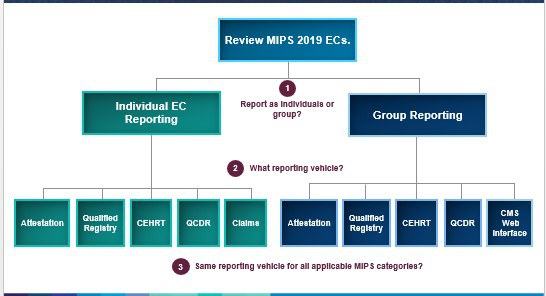A longtime leader in healthcare improvement, we’re developing new ways to revolutionize the industry.

MIPS Reporting 101
In the midst of all the complicated reporting mechanisms in healthcare, the Quality Payment Program gave us the Merit-based Incentive Payment System (MIPS). And for good reason. MIPS combines the Physician Quality Reporting System, Value Modifier Program and Electronic Health Record Incentive Program into a single reporting program.
MIPS presents a significant opportunity to turn regulatory risk into true financial reward. However, for those choosing MIPS, determining whether to report at the Individual or Group level in the 2017 measurement period can be a head scratcher.
Individual vs Group
- Individual: report MIPS measures to the Centers for Medicare & Medicaid Services (CMS) at the “Individual” Tax ID Number (TIN) or National Provider Identifier (NPI) level. In which, each TIN could have as little as a single NPI (i.e. a single provider billing under that TIN).
- Group: report along with other Providers (NPI’s) under a common TIN.
Pros, cons and implications
While the Individual option is the simplest and most obvious option there are a few things to consider.
- Low volume and revenue exclusions may apply more quickly (less than 100 beneficiaries or $30,000 in part B claims).
- It is especially important to note (as illustrated below), that reporting via claims is only able to be done if the Individual option is selected.
Alternatively, the Group option can provide a lot more flexibility and ability to pool together higher and lower performing eligible clinicians (ECs). But, there are a few things to consider here also.
- As mentioned, if there are EC’s that are not performing as well, it can help mitigate the impact of those lower scoring ECs by balancing out the scores.
- Also, if there are specialties that exist under a TIN and that do not have metrics that align very well or if some EC’s within the TIN are still struggling under the ACI (formerly Meaningful Use) category, Group reporting can again help mitigate once the scores are aggregated.
The diagram below illustrates a decision tree for each reporting option. Carefully considering the pros/cons of each is very important.

If you’re struggling with whether to report at the Individual or Group level, or aren’t sure if you’re required to report for MIPS in 2017, click here for more information.

